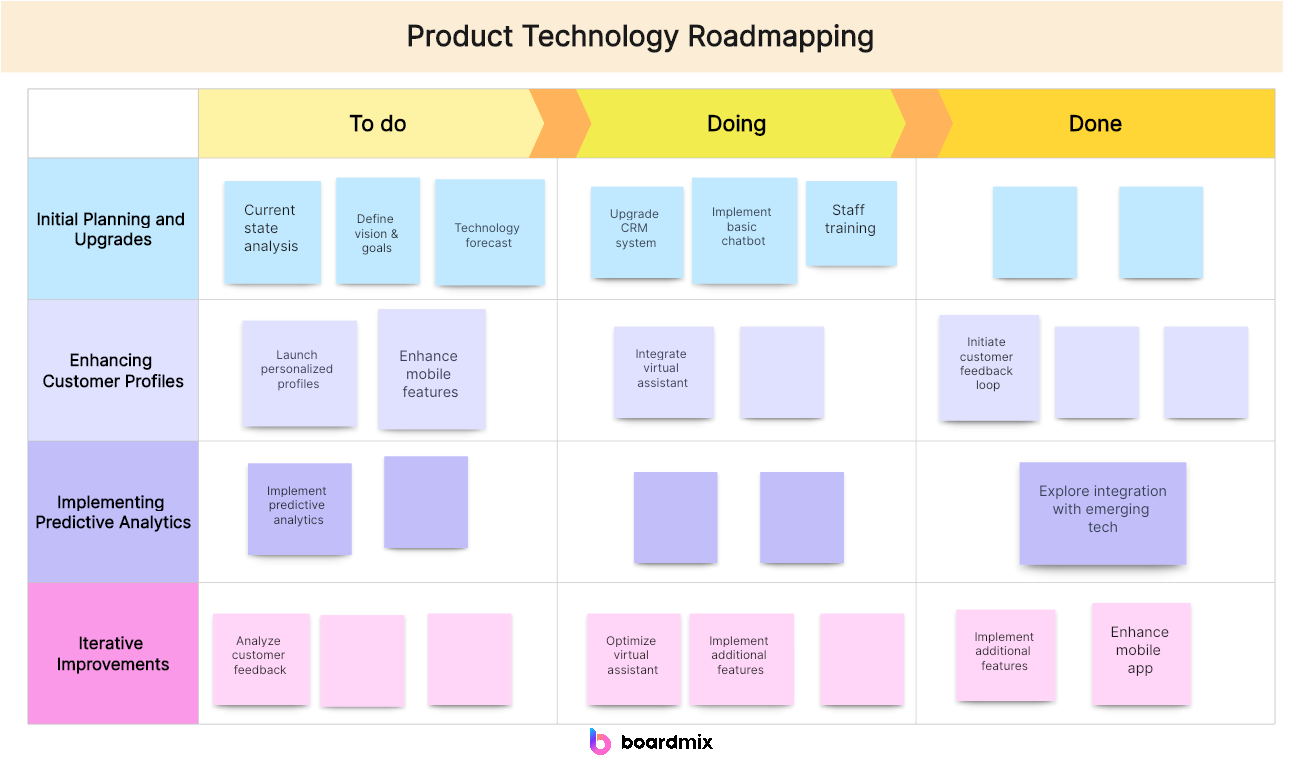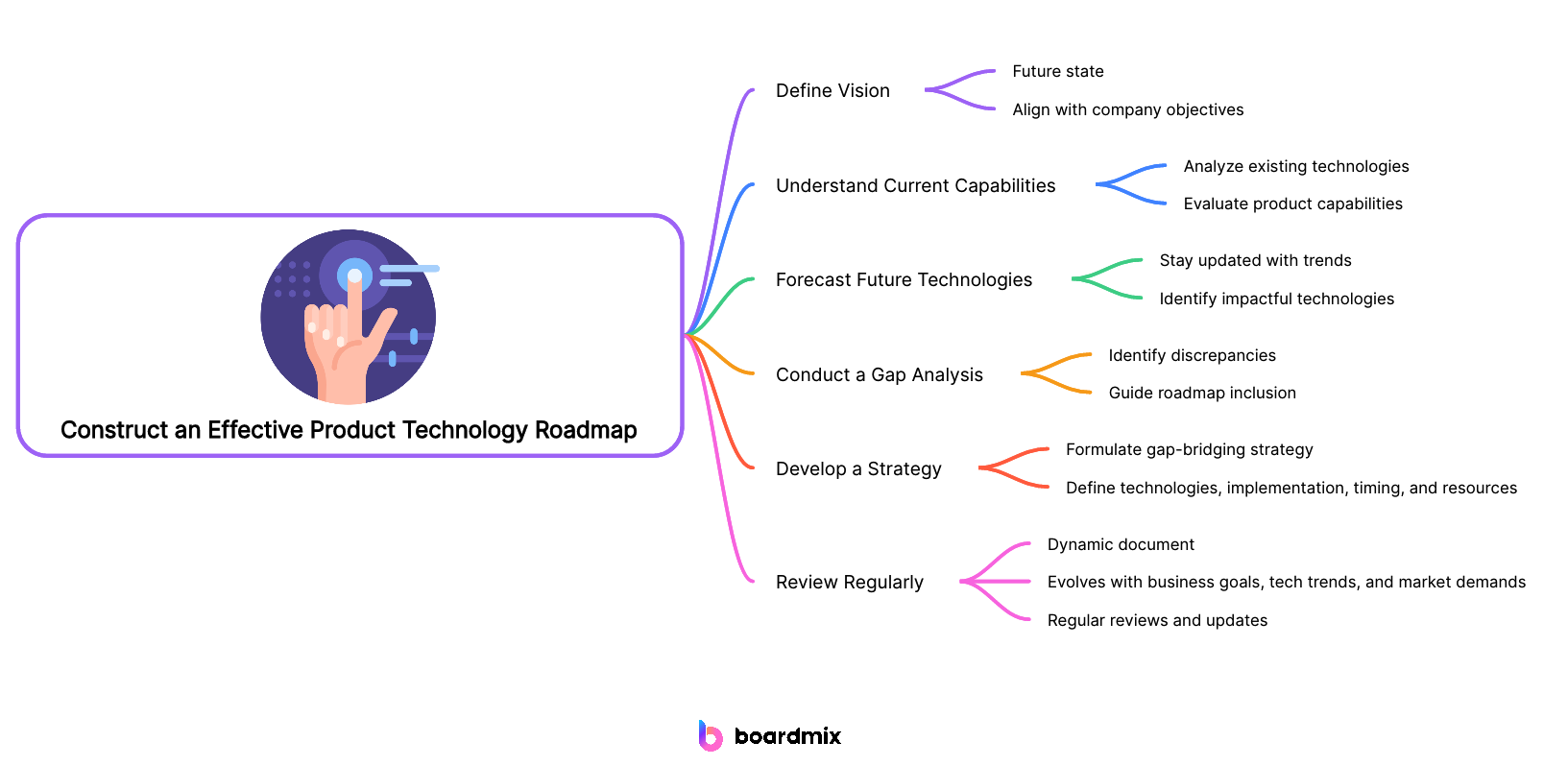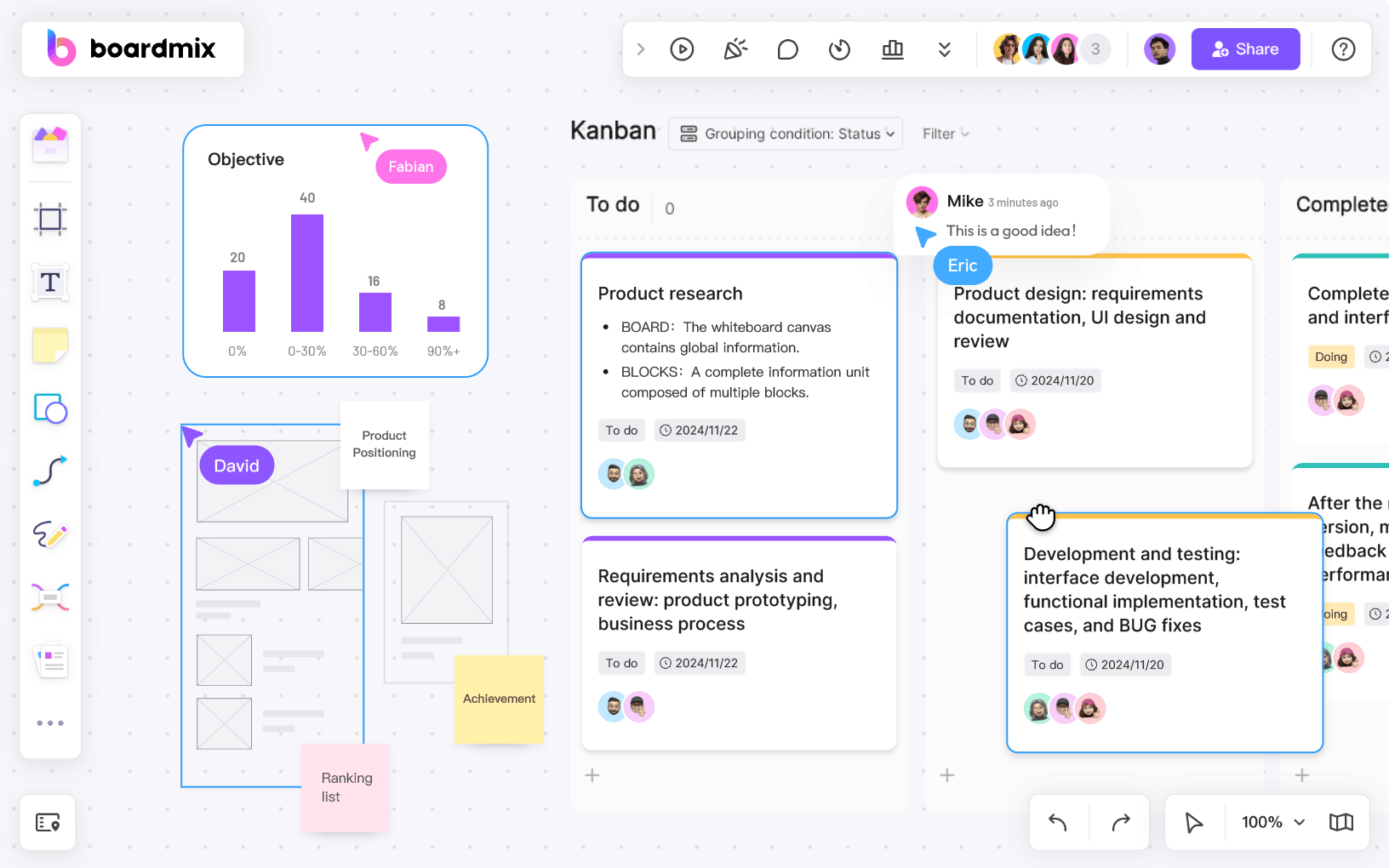In the fast-paced world of technology, where trends change rapidly and competition is fierce, having a strategic plan is crucial. A Product Technology Roadmap serves as a guiding beacon that aligns technological development with product objectives, ensuring a company stays ahead in the race. This comprehensive document defines the trajectory of a product's evolution, intertwining technology innovation with business strategy.
Grasping the Fundamentals of Product Technology Roadmapping
The concept of a Product Technology Roadmap is rooted in strategic planning and technological forecasting. It bridges the gap between current product capabilities and envisioned future capabilities, outlining the technological innovations required to make that leap. The roadmap encapsulates the course of action for utilizing technologies, resources, and capabilities to meet business objectives and market demands.

A Product Technology Roadmap is multifaceted:
- It acts as a planning tool, outlining the technologies necessary for product development.
- It serves as a communication device, establishing a common language for internal and external stakeholders.
- It functions as a decision-making guide, facilitating strategic decisions around product development.
Key Elements of a Product Technology Roadmap
Understanding the integral components of a Product Technology Roadmap is paramount. These elements collectively form the backbone of the roadmap:
- Vision: This captures the future state of the product, outlining where the company wants to take the product over time. It aligns with the overall strategic objectives of the organization.
- Current State: This represents the present capabilities and technologies that underpin the product. It establishes a starting point for the roadmap.
- Technology Forecast: This details the upcoming technological advancements that may impact the product. This forecast aids in proactive planning.
- Gap Analysis: This identifies the gaps between the current state and vision. The findings form the essence of the Product Technology Roadmap.
- Implementation Plan: This lays out how identified gaps will be bridged using upcoming technologies, including a timeline, resource allocation, risk management, and more.
Importance of Product Technology Roadmapping
The value proposition of Product Technology Roadmapping is significant:
Future Preparedness
By forecasting upcoming technology trends and assessing their potential impact on the product, roadmapping helps organizations prepare for future challenges and opportunities.
Informed Decision Making
Roadmaps facilitate informed decision-making by providing visibility into resource allocation, technology adoption, risk mitigation, and more.
Alignment
Roadmaps align technology efforts with business objectives, ensuring everyone is working towards a common goal.
Competitive Advantage
Through proactive planning and strategic alignment, roadmapping provides organizations with a competitive edge in their respective markets.
In essence, a Product Technology Roadmap is a crucial strategic tool that ensures product evolution aligns with technological advancements and market expectations. By understanding its fundamentals and key components, companies can effectively utilize roadmapping to steer their products towards success.
Procedure to Construct an Effective Product Technology Roadmap
Creating a Product Technology Roadmap requires a systematic and strategic approach. Here is the procedure to construct an effective roadmap:

Define the Vision
The first step is to define the future state of the product, keeping in line with the company's strategic objectives. This vision acts as the guiding light for the roadmap.
Understand Current Capabilities
Analyze the existing product technologies and capabilities. This evaluation provides a starting point for the roadmap and helps understand what needs to change or improve.
Forecast Future Technologies
Stay updated with emerging technology trends that could impact the product. This understanding can provide direction to the roadmap.
Conduct a Gap Analysis
Perform a gap analysis to identify the discrepancy between the current capabilities and envisioned future state. This analysis will guide what needs to be included in the roadmap.
Develop a Strategy
Formulate a strategy for bridging the identified gaps using future technologies. This includes defining what technologies to use, how to implement them, when to do it, and what resources would be required.
Review Regularly
A Product Technology Roadmap should be viewed as a dynamic document that changes as per the evolving business goals, technology trends, and market demands. Hence, regular reviews and updates are crucial.
A Multifunctional Product Technology Roadmap Maker - Boardmix
While formulating a Product Technology Roadmap is a crucial task, managing it efficiently is equally important. That's where Boardmix comes into play - a multifunctional product technology roadmap maker that streamlines and enhances the entire roadmapping process.

Here's how Boardmix can transform your roadmapping journey:
- Easy to Use: Boardmix’s user-friendly interface makes it easy for anyone to create, modify, and share their Product Technology Roadmap, without requiring any technical expertise.
- Collaborative: The platform facilitates collaboration, enabling multiple stakeholders across an organization to provide inputs and insights into the roadmap. This ensures alignment across teams and promotes informed decision-making.
- Real-time Updates: Boardmix provides real-time visibility into the progress of your roadmap, helping you stay on top of things at all times.
- Flexible and Scalable: Whether you're a small startup or a large enterprise, Boardmix’s flexibility and scalability cater to your unique roadmapping needs.
- Secure: The platform has robust security measures in place, ensuring your sensitive data remains secure.
In short, Boardmix is not just a tool for creating a Product Technology Roadmap, but a strategic ally that helps organizations align their product objectives with technological developments seamlessly and efficiently. Just try it out now!
Pitfalls to Avoid During Product Technology Roadmap Development
Developing a Product Technology Roadmap is a complex and strategic task. While it can serve as a game-changing tool for businesses, mistakes during its formulation can hinder its effectiveness. Here are common pitfalls to avoid:
Neglecting Strategic Alignment
The Product Technology Roadmap should be in sync with the overall business strategy. Ignoring this alignment can lead to misdirected efforts and ineffective outcomes.
Focusing Only on Technology
Although technology forms the backbone of the roadmap, overemphasis on it at the cost of market trends, customer needs, and business goals can be detrimental. The roadmap should balance technological capabilities with other essential aspects.
Lacking Specificity
A Product Technology Roadmap should be clear, detailed, and precise. Vague or ambiguous information can lead to misinterpretations and misguided decisions.
Forgetting Flexibility
The roadmap should not be viewed as a static document. Failing to adapt it according to changing business objectives, technological advancements, or market demands can limit its effectiveness.
Overlooking Stakeholder Inputs
Input from multiple stakeholders, including employees, customers, and partners, can provide invaluable insights. Neglecting these perspectives might result in an incomplete roadmap.
Ignoring Risk Assessment
Not considering potential risks during roadmap development can lead to unpleasant surprises down the line. Regular risk assessment should be integral to the roadmapping process.
By avoiding these pitfalls, businesses can ensure their Product Technology Roadmap is accurate, comprehensive, and valuable, propelling their products towards success in a technologically evolving marketplace.













